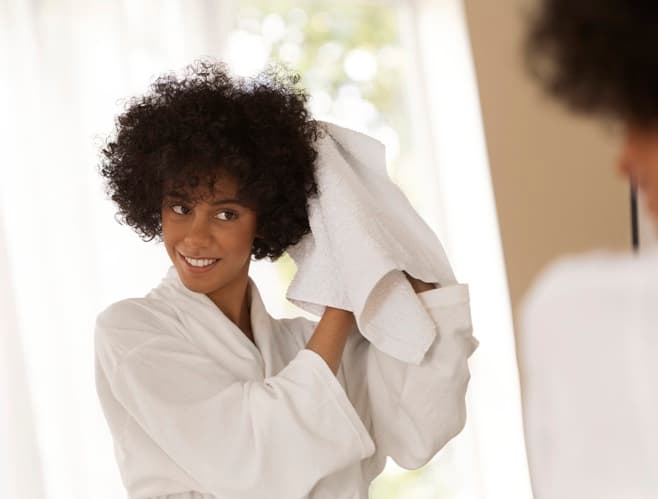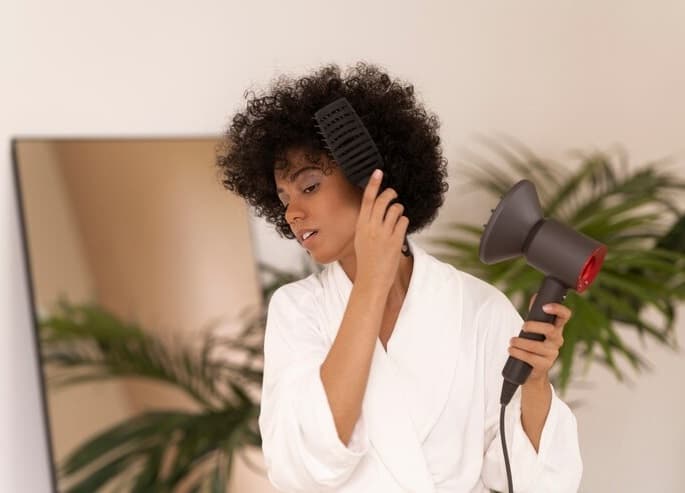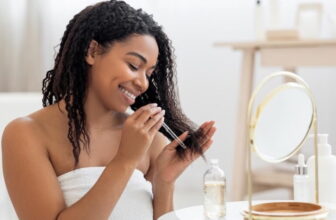Genius Ways To Dry Your Hair Without Damaging It
Proper hair care is essential for maintaining healthy, beautiful locks. However, many people inadvertently damage their hair while trying to dry it quickly. Blow drying, in particular, can cause heat damage and strip the hair of its natural moisture, leading to frizz, breakage, and dullness.
Washing our hair is a task we can’t escape, but drying it post-shower can be a bit tricky. If not done correctly, it can lead to serious damage. Not to worry, there are effective ways to dry your hair without causing harm, whether you choose to air-dry, towel-dry, or even the potentially damaging blow-dry.
Understanding the tips and tricks for proper hair drying is beneficial for various reasons. First, with the right tools and techniques, you can say goodbye to frizz and fragile hair. Additionally, you can bid farewell to breakage and dullness, achieving a healthier and more vibrant look.
How to Air-Dry Your Hair Without Damaging It
Ditching the blow-dry for air-drying is a healthier choice, but mastering it might require a bit of practice. Air drying is the process of letting your hair dry naturally without using any external heat sources, such as a hairdryer.
Instead of using tools that produce heat, you allow your hair to dry on its own through exposure to the air. This method is a healthier alternative to heat styling, as it reduces the risk of damage to your hair caused by excessive heat.
Air drying can be done by letting your hair dry freely or using specific techniques to enhance its natural texture and appearance. Below is a comprehensive guide to air-dry your hair without causing any damage. This guide, crafted by professional stylists and aligned with Nutrafol’s insights, provides essential steps to keep your hair healthy. Following these guidelines is key to achieving the desired look without compromising the well-being of your precious locks.
Shampoo strategy
Some stylists suggest skipping shampoo altogether. Frizz can arise when dry hair encounters moisture in the air, and shampoo, by stripping natural oils, may worsen this. If skipping shampoo seems extreme, try reducing it to once a week or opt for a cleansing conditioner.
 Freepik Photo
Freepik Photo -
Drying technique
When air-drying, shake out excess water from your hair. Then, gently squeeze the water without rubbing. Professionals prefer microfiber towels for their smoother finish. Washing your hair in the evening allows overnight calming of the hair, reducing frizz.
-
Detangling
Avoid brushing wet hair; instead, gently detangle using your fingers or a wide-tooth comb dipped in a leave-in conditioner. Never wrap a towel too tightly around your head.
-
Conditioning
Apply leave-in conditioner or hair oil after towel-drying to maintain hair softness and prevent frizz.
-
Styling damp hair
Style your damp hair to achieve the desired look before air drying. Loose braids or twists work well, or you can use small clips for lifted roots. Curling mousse or salt water spray can add texture or curls.
-
Weekly deep conditioning
Treat your hair to a weekly hair mask to infuse moisture, making future styling easier. You can easily create various masks at home using everyday ingredients.
-
Heat tooltips
If you must use heat tools, opt for modern, gentler models designed to be hair-friendly. Always use a heat protectant and avoid overheating your hair.
How to Towel-Dry Hair Without Damaging it
Drying your hair with care is crucial and to avoid damage, all you need is a microfiber towel, known for its moisture-absorbing abilities and soft texture that prevents harm to your hair. If a microfiber towel isn’t available, a soft T-shirt can be a suitable alternative. Here are the steps for proper towel-drying:
-
Squeeze out excess water
After a refreshing shower, gently squeeze out excess water from your hair, starting at the scalp and working your way down. This initial step helps the towel get a head start without dealing with an overload of water.
Quick Tip: For those with coarse, thick, or curly hair prone to frizz, use a leave-in conditioner and a curl-defining product or serum immediately.
-
Blot your hair
Press your hair with a soft microfiber towel or T-shirt. If you have longer or thicker hair, section it, wrap the towel around each section, and gently squeeze. Avoid yanking, rubbing, or twisting too tightly. To maximize benefits, use a dry part of the towel for each section. Repeat if needed, but keep in mind that your hair won’t be bone dry; let the air do some of the work.
-
Optional: wrap your hair
This step is optional and often preferred by those with long hair. Wrap your hair in a turban-like fashion using a towel for about 10-20 minutes, letting it do its magic while you attend to other tasks.
-
Take off the towel
Slowly remove the towel without pulling on your hair, considering that wet hair is more brittle. You can comb it after it’s dried. If you’re in a hurry, detangle it by running your fingers through it or using a wide-toothed comb.
Quick Tip: Apply a serum or leave-in conditioner when your hair is 70-80% dry, especially for those with fine hair or curls. Use a comb on wet hair instead of a brush to avoid additional damage.
How to blow-dry hair without damage
Blow drying is a hair styling technique that involves using a hairdryer, also known as a blow dryer, to dry and style your hair. During blow drying, hot air is directed onto the wet hair to evaporate the moisture, resulting in a quicker drying process compared to air drying or towel drying. Additionally, blow drying allows for various styling options, as you can use brushes or other tools to shape and control your hair.
 Freepik Photo
Freepik Photo While blow drying is a popular and efficient method, it’s important to use it cautiously, as excessive heat can potentially lead to hair damage. Using a heat protectant and employing proper techniques are recommended to minimize any adverse effects. Here are some expert tips from Dr. Burg and professional stylists, as shared by WellandGood, on how to blow dry your hair without causing damage:
-
Begin with healthy hair
Dr. Burg emphasizes starting with healthy strands, as damaged or brittle hair is more prone to breakage under high heat. A well-balanced diet rich in nutrients like zinc, biotin, B6, and vitamin D contributes to strong, resilient strands. For those with specific dietary restrictions or a busy lifestyle, considering supplements can ensure the essential nutrients for great hair.
-
Towel dry before using heat
Before applying any heat, it’s crucial to towel dry your hair to remove as much surface water as possible. Use the tips we explained earlier to towel dry your hair properly without damaging it. This prepares your hair for the blow-drying process.
-
Use heat protectant
Applying a heat protectant is essential to safeguarding your hair from potential damage. Even with protection, it’s important to be mindful of the temperature of your heat tools. The Chi 44 Iron Guard Thermal Protection Spray and Mizani Style Shifter Society Heat Screen Heat Protectant Spray are recommended choices for various hair types.
-
Opt for medium heat
Do not let your hair tool get too hot when drying your hair. Medium heat is just fine to get the work done.
-
Avoid over-drying
Rauchut advises stopping the blow-drying process once your hair feels smooth and consistent in texture. Over-drying can weaken the hair and make it susceptible to breakage.
-
Blow-dry in circular motions
Instead of randomly waving the dryer, blow-dry in circular motions. This technique prevents tangles and damage, especially for longer lengths. Directing roots and mid-lengths with your fingers and using a fluid motion reduces the risk of tangles that could lead to breakage during brushing.
-
Allow sufficient time
Dr. Burg stresses the importance of taking time to thoroughly dry your hair without using excessive heat. “Low and slow” is the recommended approach to minimize microscopic damage caused during the washing and drying cycle.
-
Avoid over-drying frequency
Gina Rivera, CEO of Phenix Salon Suites, highlights the issue of over-drying by washing hair too frequently. This emphasizes the importance of reducing the frequency of hair washing, which, in turn, decreases the need for frequent blow-drying, contributing to healthier hair.
Photo: Yesmadam






